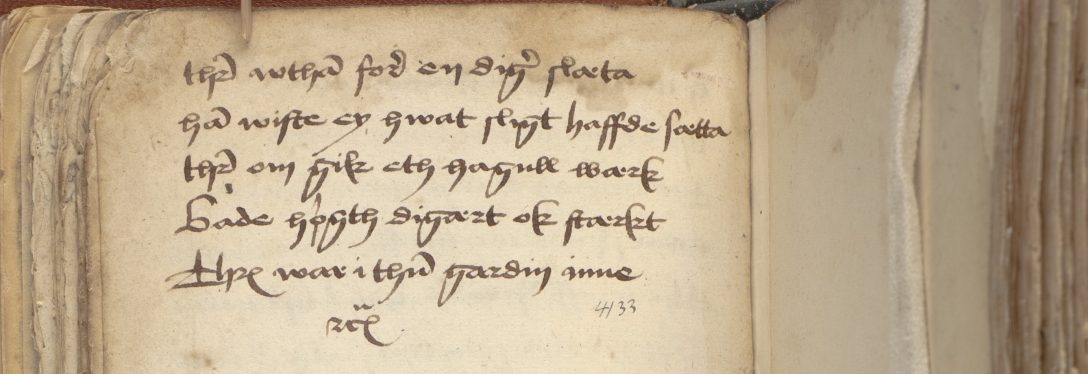For my PhD (2017) I worked on a Swedish late-medieval, multitext manuscript, Cod. Holm. D 3 also called Fru Elins bok, ‘Lady Elin’s Book’. One of the things that made me choose to work on this manuscript is that it has often described as “useless” and “full of errors”. As my focus wasn’t on textual criticism and finding the textual archetype (the authors original intent) but more on the materiality of the manuscript in its context (cf. Material Philology) this manuscript was perfect to show how manuscripts that had been deemed worthless still hold valuable information.
D 3 is a paper manuscript dated to around 1488 with watermarks (Åström 2007) and the name comes from the colophon at the end of the first text of the manuscript calling upon God to protect the excellent Lady Elin who owns the book. The owner has been identified as Elin Gustavsdotter Sture, who died around 1495 (Wiktorsson 1997). She was married to a half-brother of King Karl Knutsson of Sweden and then to Erik Axelsson Tott, who was regent of the Swedish realm during two periods in the 1450s and 1460s. She was also the daughter of Märta Ulfsdotter Sparre, who also owned a manuscript, Cod. Holm. D 4a, written around 1450.

The two manuscripts are very similar – from sharing many of the same texts, some even in the same order, down to the word level. Because of the similarities many previous scholars have seen D 4a as the actual exemplar of D 3. This narrative has been argued for in (most of) the latest publications (e.g. Wollin 1997, Kornhall 1959, Olson 1921)* but there has always been information that didn’t fit.
I made a close study of D 3’s Flores och Blanzeflor, the Swedish translation of the French romance Floire et Blancheflor, which Olson (1921) was convinced was a copy of D 4a. In my dissertation I argued that that is not the case. While there are very striking similarities, D 3 also contains clear evidence of traces of another textual witness, which seems related to another branch of the stemma, a now lost manuscript. The differences are such that I found it clear that D 3’s Flores could not be a copy of D 4a’s. This conclusion is also in line with the discussions of exemplars for the other texts in D 3, but that is a whole, complicated post for another time.
*Yes, recent in this case does go back to the 1920s.
Literature
Backman, 2017. Handskriftens materialitet.
Kornhall, 1959. Den fornsvenska sagan om Karl Magnus : handskrifter och texthistoria.
Olson, 1921 [1956]. Flores och Blanzeflor.
Wiktorsson, 1997. “On the Scribal Hands in the Manuscripts of Skemptan” in Master Golyas and Sweden : the transformation of a clerical satire : a collection of essays, eds. Ferm & Morris.
Wollin, 1997. “The Lord-Abbot and his Texts” in Master Golyas and Sweden : the transformation of a clerical satire : a collection of essays, eds. Ferm & Morris.
